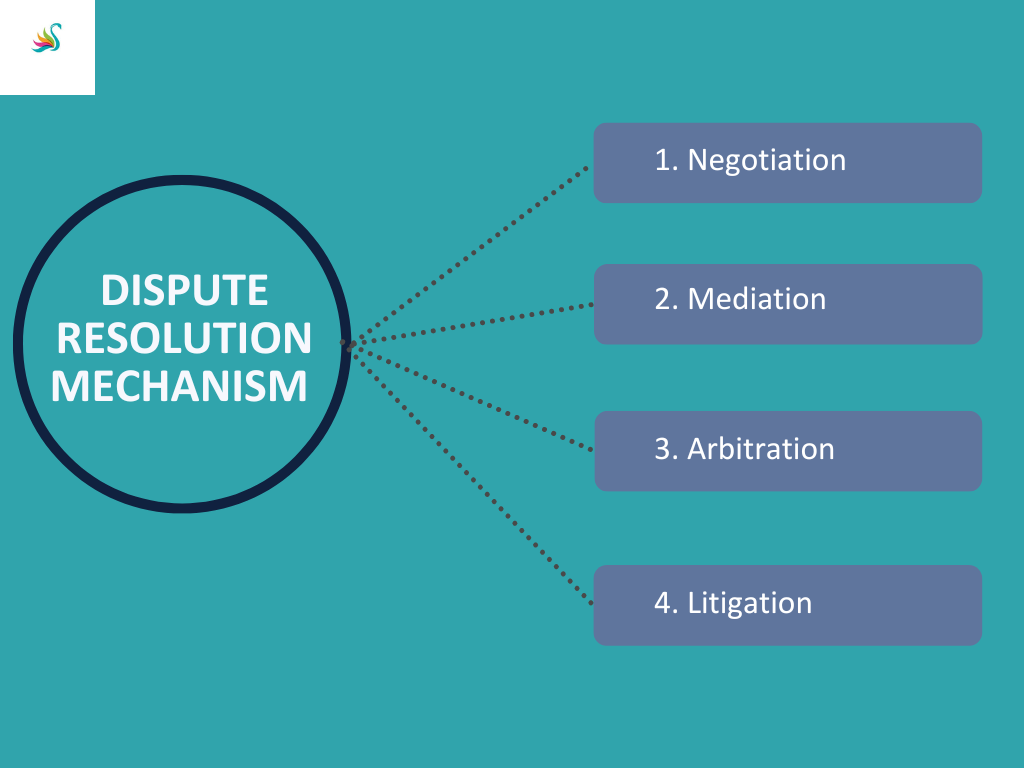Dispute Resolution Mechanisms in Construction Contracts
Introduction:
Disputes are an inherent part of construction projects and can pose significant challenges for Projects. Resolving disputes efficiently and maintaining positive client relationships is crucial for successful project completion. This chapter provides a comprehensive analysis of the various dispute resolution mechanisms commonly employed in construction contracts, including negotiation, mediation, arbitration, and litigation. Through the examination of real-life examples and relevant case laws, this chapter aims to equip contract managers with actionable insights and practical advice for selecting the most appropriate resolution mechanism based on project-specific circumstances.

1. Negotiation:

Introduction:
Negotiation is the most informal and common dispute resolution mechanism used in construction contracts. It involves discussions between parties in an attempt to resolve disputes without involving third parties. Contract managers should encourage open and transparent communication to foster a constructive negotiation process.
Effectiveness and Limitations:
Negotiations allow parties to have control over the outcome and maintain positive working relationships. However, negotiations might fail if parties have strongly opposite positions or if one party adopts an aggressive approach. This can lead to delays and potential project disruption.
Real-Life Example:
In a construction project where the contractor experienced delays due to unforeseen events beyond their control, negotiation was employed. The project owner agreed to extend the deadline, provided the contractor absorbed part of the cost overrun. The negotiation resulted in a fair and satisfactory agreement, preventing future conflicts.
2. Mediation:

Introduction:
Mediation is a voluntary and confidential process facilitated by a neutral third party, the mediator. The mediator assists parties in reaching a mutually acceptable resolution. The mediator’s role involves guiding discussions, facilitating communication, and suggesting potential solutions without imposing a binding decision.
Effectiveness and Limitations:
Mediation promotes dialogue, encourages parties to consider a wider range of options, and can preserve relationships. While non-binding, mediated resolutions tend to be adhered to, as parties actively participate in crafting the solution. However, if parties are unwilling to cooperate or if power imbalances exist, mediation may not yield satisfactory outcomes.
Real-Life Example:
In a construction dispute over variations and additional works, the contractor and owner agreed to mediation. Through open discussions facilitated by the mediator, they reached a compromise by sharing additional costs and establishing clearer contract provisions. This successful mediation preserved their relationship and allowed the project to continue without significant delays.
3. Arbitration:

Introduction:
Arbitration is a private dispute resolution process where parties agree to submit their dispute to one or more arbitrators who issue a binding decision called an award. Arbitration is often utilized due to its flexibility, confidentiality, and enforceability of the award.
Effectiveness and Limitations::
Arbitration allows parties to avoid lengthy court procedures and maintain confidentiality. Arbitral awards are enforceable under international conventions, increasing compliance rates. However, arbitration can be expensive, time-consuming, and lacks the level of formal discovery and precedent-setting as litigation.
Real-Life Example:
In a complex construction dispute involving defective work, the parties agreed to arbitration. The arbitral tribunal conducted expert evaluations and issued a binding award, requiring the contractor to remedy the defects and compensate the owner. This efficient resolution allowed the parties to finalize the project promptly.
4. Litigation:

Introduction:
Litigation entails resolving disputes through the formal court system. It involves presenting evidence, legal arguments, and obtaining a binding decision from a judge or jury.
IEffectiveness and Limitations::
Litigation provides a structured process, enabling parties to assert their legal rights and obtain a binding judgment. However, litigation can be adversarial, time-consuming, and costly. It also lacks privacy and confidentiality, potentially damaging client relationships.
Real-Life Example:
In a construction dispute regarding payment delays, the contractor filed a lawsuit against the owner. The court reviewed the evidence, contract terms, and relevant laws, rendering a judgment in favor of the contractor. Although the litigation was costly, it clarified the parties’ rights and obligations and provided certainty for future interactions.
Conclusion:

Effectively resolving disputes is crucial to navigate construction projects successfully. By understanding negotiation, mediation, arbitration, and litigation, contract managers can identify the most suitable mechanism for each dispute. The real-life examples and case laws presented in this chapter underscore the effectiveness and limitations of each method. Ultimately, contract managers who prioritize open communication, timely action, and the appropriate resolution mechanism will foster positive client relationships and enhance project outcome.
We will be coming up with the detailed explanation about the above-mentioned various dispute resolution mechanisms commonly employed in construction contracts in our future blogs. Stay tuned Happy Reading!
